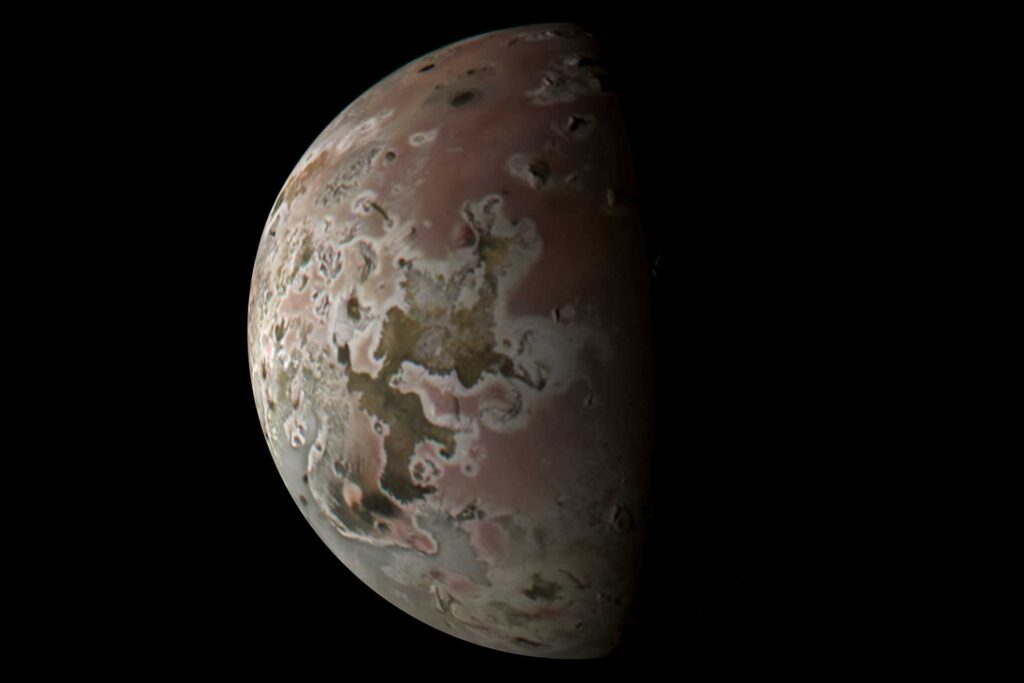Scientists say the new images of Io are the best and clearest since the Galileo probe. Between 1995 and 2003, Galileo studied Jupiter and its moons. Jason Perry of the University of Arizona, who was formerly a member of the Galileo mission team and was tasked with processing some of the raw images, says images like these will provide the data needed to conduct much research on Io in the years to come. They show the Jupiter-facing hemisphere, the Arctic region, and Io’s Jupiter-facing hemisphere.
As the innermost moon of the Jupiter system, Io is only slightly larger than Earth’s moon and has many volcanoes. Infrared images show Io’s staining at the same time as molten material rises from beneath the moon’s surface and the formation of vast sedimentary lakes. The reason for this is the dynamic gravitational environment of Io. The orbit of this moon is elliptical around Jupiter; This means that the gravitational influence of Jupiter changes during the moon’s rotation and changes its shape.
Other Galilean moons, including Callisto, Europa, and Ganymede, all exert a gravitational pull on Io. These gravitational effects produce intense heat on Io that melts its interior and then spreads the molten material across the planet’s surface.
The impact of Io’s continuous eruptions is amazing. A steady stream of sulfur dioxide gas erupting from Io flows into Jupiter’s orbit, where it forms a massive torus of plasma that steadily deflects and accelerates along the giant planet’s magnetic field lines.


![Huawei P60 Pro under the Zoomite microscope; China’s camera-centric dragon [تماشا کنید]](https://pcjow.com/wp-content/uploads/2023/10/young-girl-using-huawei-p60-pro-6536c5215641fa531bdc3bc9-150x150.jpeg)
